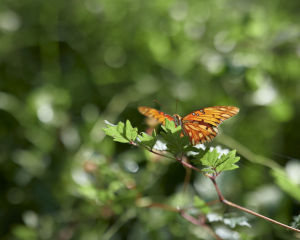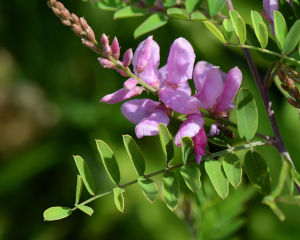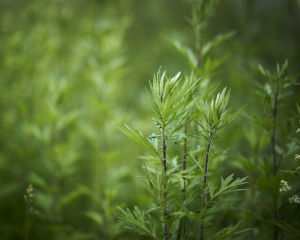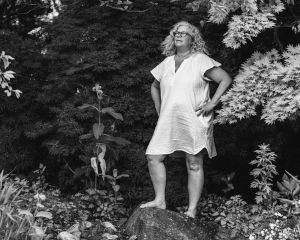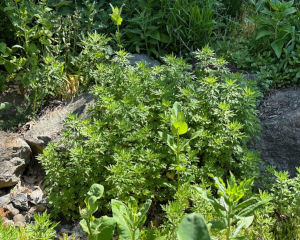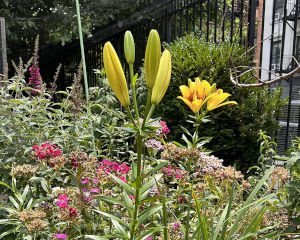

John Ruskin
“If you can paint one leaf, you can paint the world.”
July: Capturing Natures Textures, Colors and Shapes
By Gayil Nalls, Liz Macklin, and Karen Bauer
Sign up for our monthly newsletter!
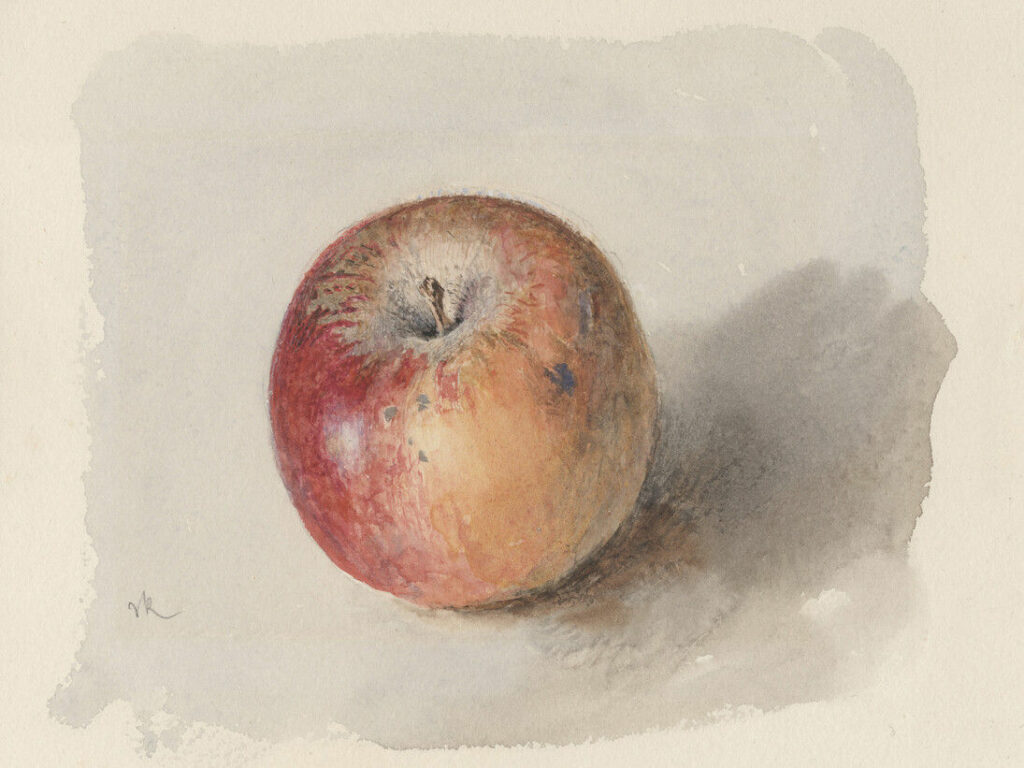
Observation and Exploration
Nature Patterns and Textures: Enhance your drawings by zooming in on the intricate details and textures found in nature, such as the patterns on tree bark, the veins of leaves, or the textures of fruits.
In half of the world, July is the peak of the season and nature is bursting with color, bees, butterflies, and birds. Even so,in these places, July is also mid-summer and nature’s turning point. The long, hot days are often referred to as the Dog Days of Summer, but by the end of the month the days will be 40 minutes shorter. Plants have reached their peak growth and the birds are quieting down. Plants and trees are giving fruits, a lot of flowers are blooming in an array of color, and we sense the amazing smells in the air.
In this challenge we are going to observe natures’ textures, colors, patterns, and shapes, and experiment with close-up studies that emphasize the beauty of often-overlooked elements. This is a way to celebrate the lushness of the summer landscape and the abundance of seasonal produce by capturing and drawing the unique details of the flowers, fruits, vegetables, and trees associated with July.
“The fruits and flowers of temperate climates—the purple of the grape and plum; the red of the current and strawberry, and of the expressed juices of these, —the wine that ‘giveth his color in the cup,’ and the ‘lucent syrup tinct with cinnamon.’”
John Ruskin
Lesson: Telling the Story of a Plant by Capturing Visual Textures. Every Detail is Important
Drawing nature is a language of artistic expression and scientific observation that conveys meaning. Ruskin’s goal for the artist observer was that they “might see greater beauties then they had hitherto seen in nature and in art, and thereby gain more pleasure in life.” Fundamental to your drawing is the selection of your subject that you wish to honor as you relax into the session.
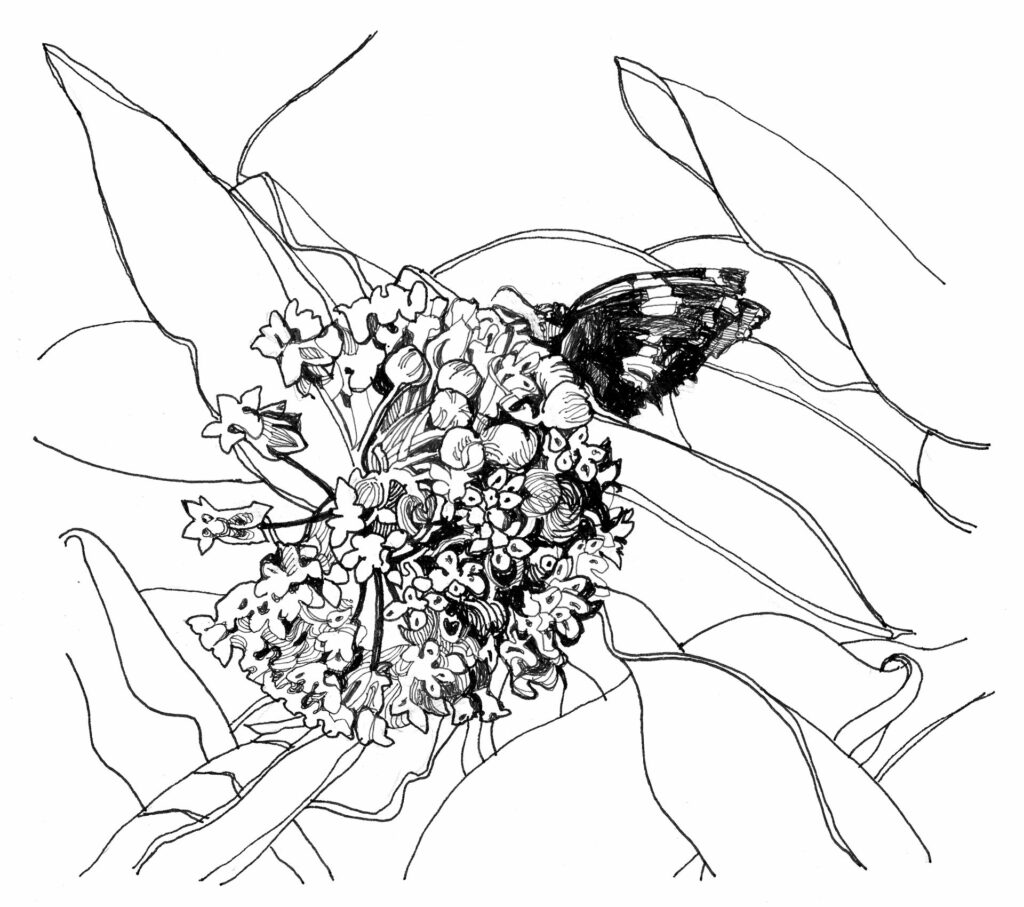
Layout your gestural underdrawings with an eye for placement on the page. Once you are confident with the proportions and overall composition, move on to contour and cross contour, moving your eye back and forth between the subject and the paper. This process of exploring and capturing the visual textures of a plant’s physical surface, and giving an accurate visual impression of that, increases the intensity and unity of a drawing and is essential for the plant’s individuality to be conveyed. Ruskin calls this refinement a study of the facts. All lines and shades must be consistent with the facts. Each line delineates and expresses the plant’s complexity and there is always more to be seen and understood.
“All beautiful lines are beautiful or delightful to the sight, in showing the directions in which material things may be wisely arranged or may serviceably move.”
John Ruskin
Do you perceive your subject to be hard, soft, rough, smooth, or hairy? Observe colors, and shapes of items like strawberries, watermelons, tomatoes, or corn. Focus closely on your subject’s particular intricate details. These could include unique patterns, such as the arrangement of kernels on a corn cob, the patterns of a tree’s bark, or the texture, angles, and veins of a leaf.
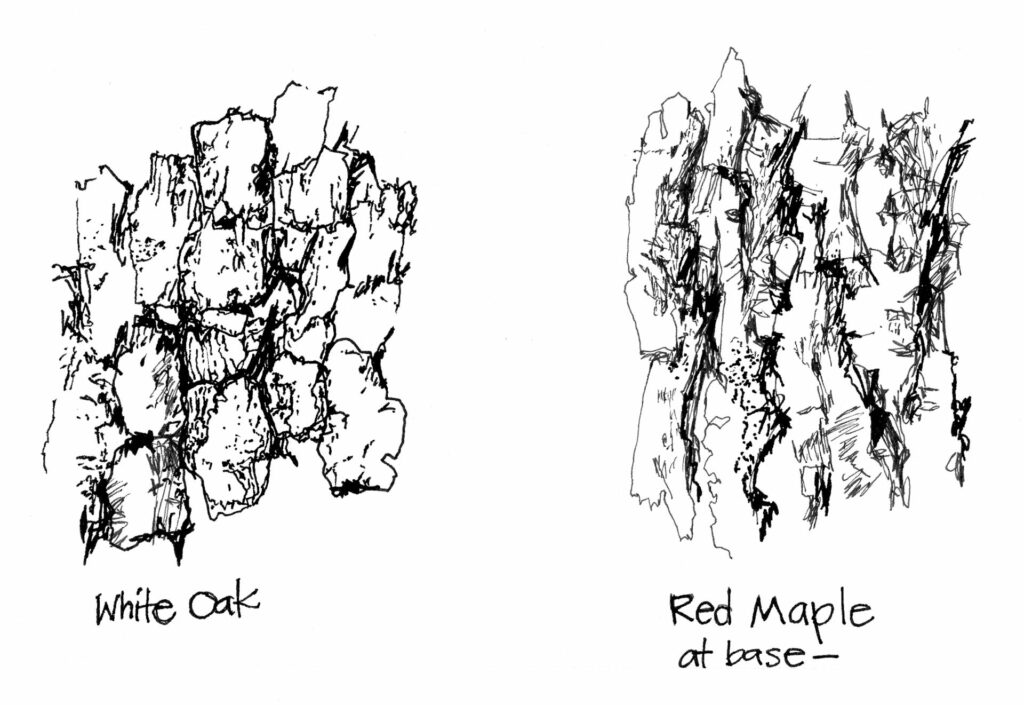
It’s not difficult to identify a tree species by its bark alone, such as the distinction between a palm tree and a pine one. Start to notice the unique bark patterns and practice this skill of identification so that you can create more realistic, informative textures essential to your drawings. Various techniques of expression can be adapted to express character of texture and requires time, patience, and some experimentation to capture the best effect. Pay close attention to how texture looks on the curves, such as bark on the curve of a branch. Take note yet again about the surface of your subject, is it smooth, waxy, leathery, lined, or pitted? Make small squares and fill them with different techniques to express different surfaces. Search for the results that best express your subject.
Additionally, read the leaves. Look carefully at them. Observe the plant at different times of the day and in different types of weather. On rainy days, are the leaves soft and floppy because they are waterlogged or are they stiff? If there has been little rain, are the leaves wilting, droopy, or turning yellow, brown, or crispy? If the leaf is curling, it is trying to retain moisture. Are the leaves needle-like or broad like those of a hardwood? With these observations you can tell the plants’ story through your drawings.
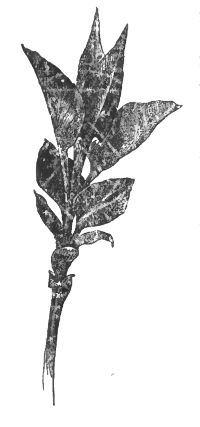
Congratulate yourself for taking on this challenge and learning new things. Share your drawing on the Plantings refrigerator on Instagram.
Take a cell-phone photo of your completed drawing and post it on the Instagram with the hashtag #WSCNatureDrawings

As Ireland transitions from the rich, smoky scent of peat-burning to a more sustainable future, its olfactory heritage is evolving. What will become the next iconic aromatic symbol of Ireland?
Click to watch the documentary trailer.
Plantings
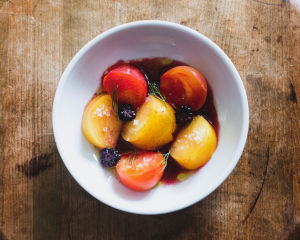
Eat More Plants Recipes:
Heirloom Tomato with Fermented Blackberries and Roasted Kale Stem Oil
By Tessa Liebman


